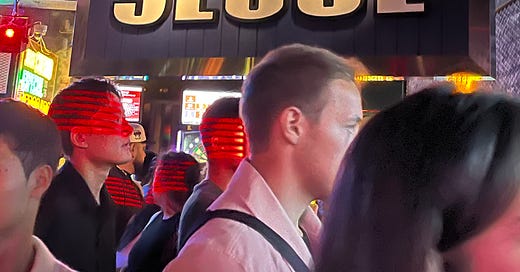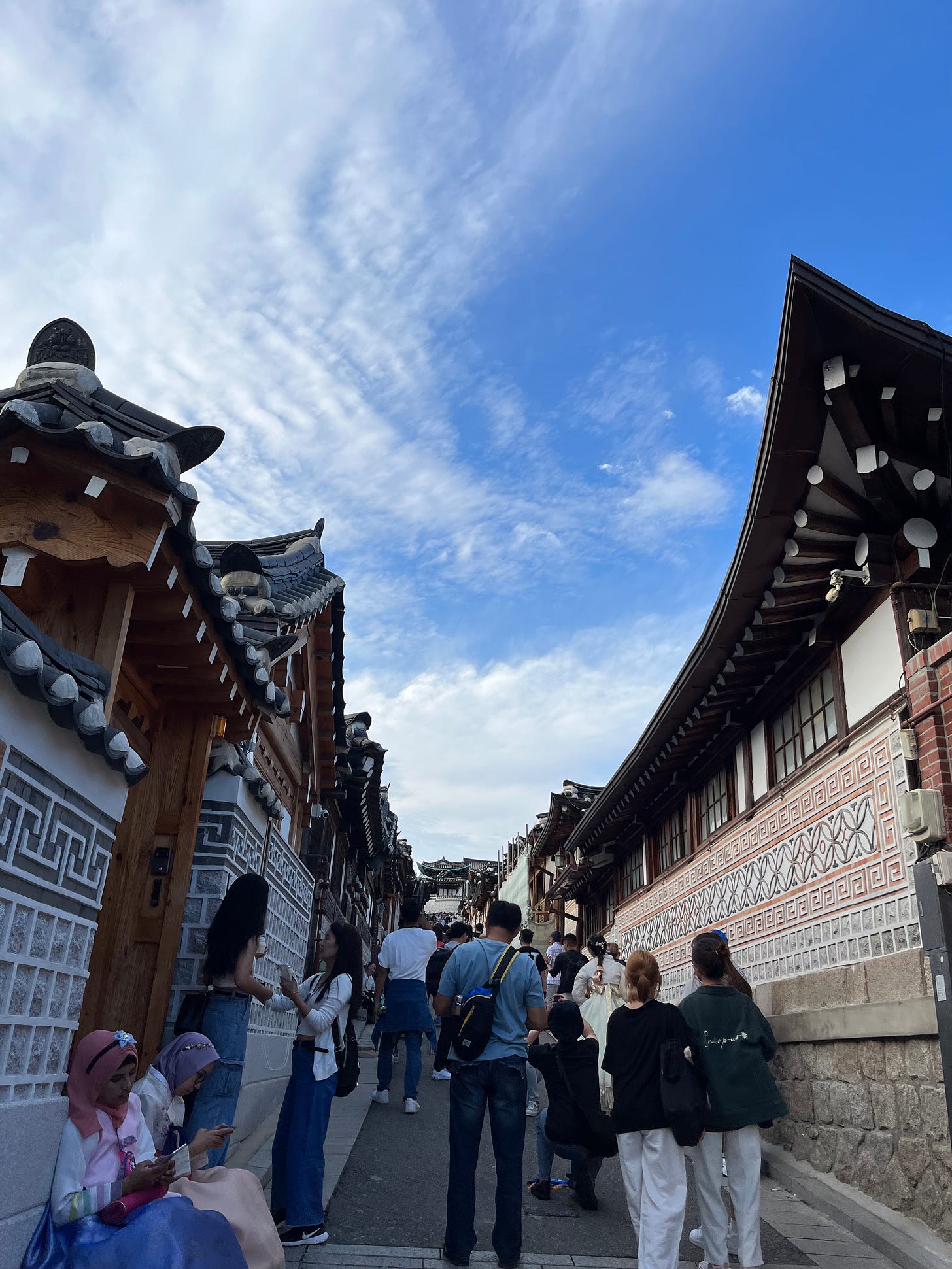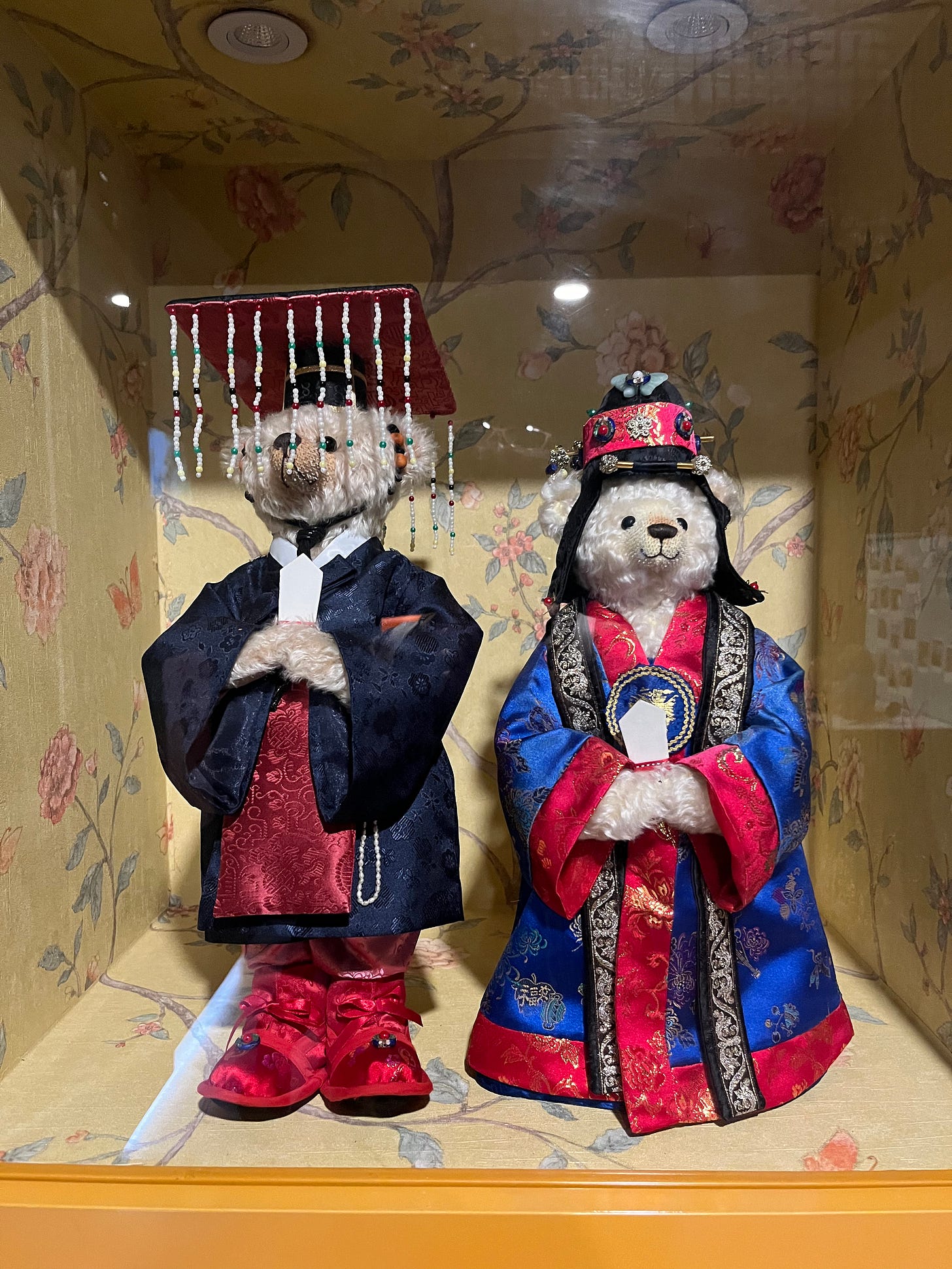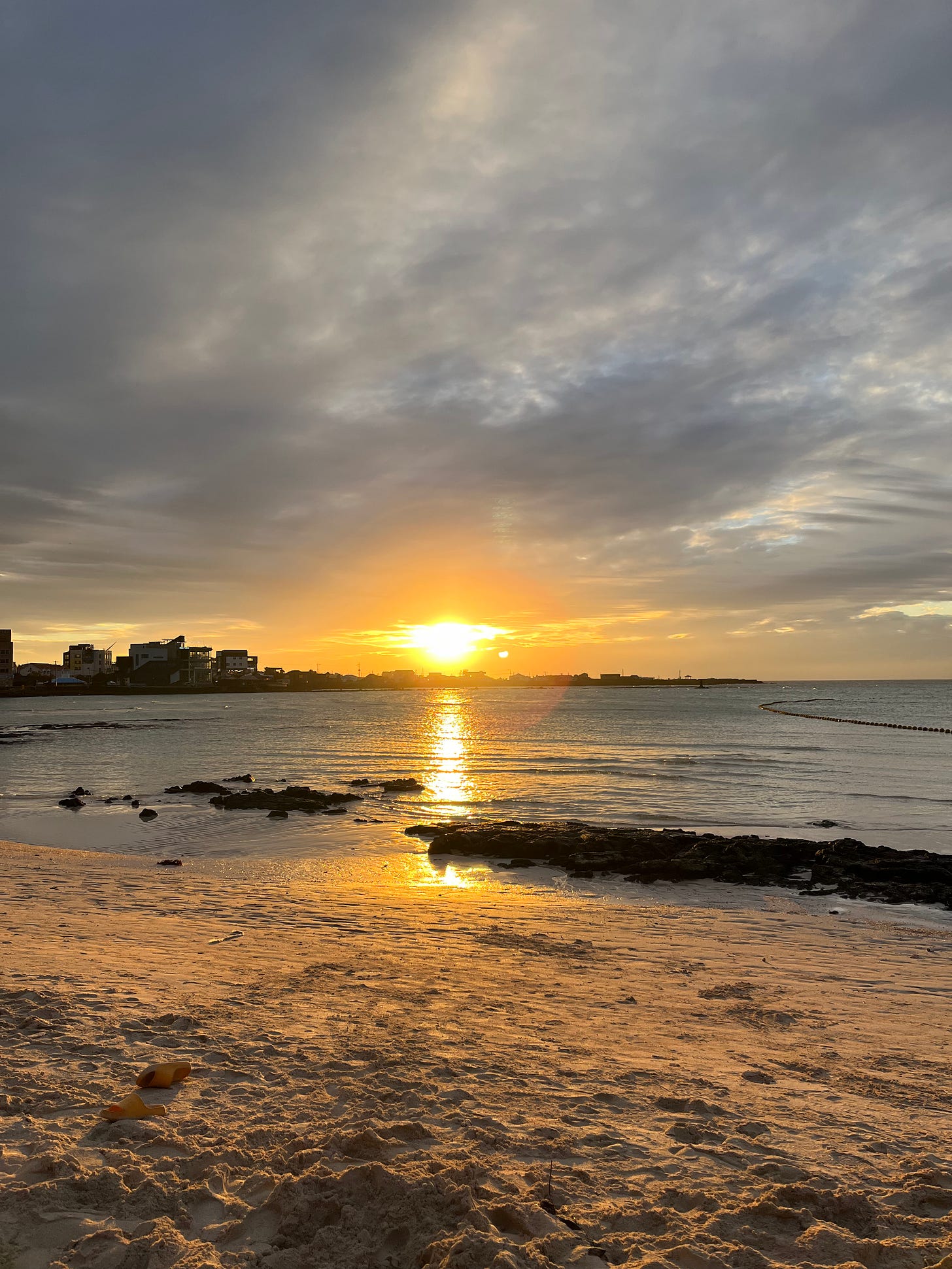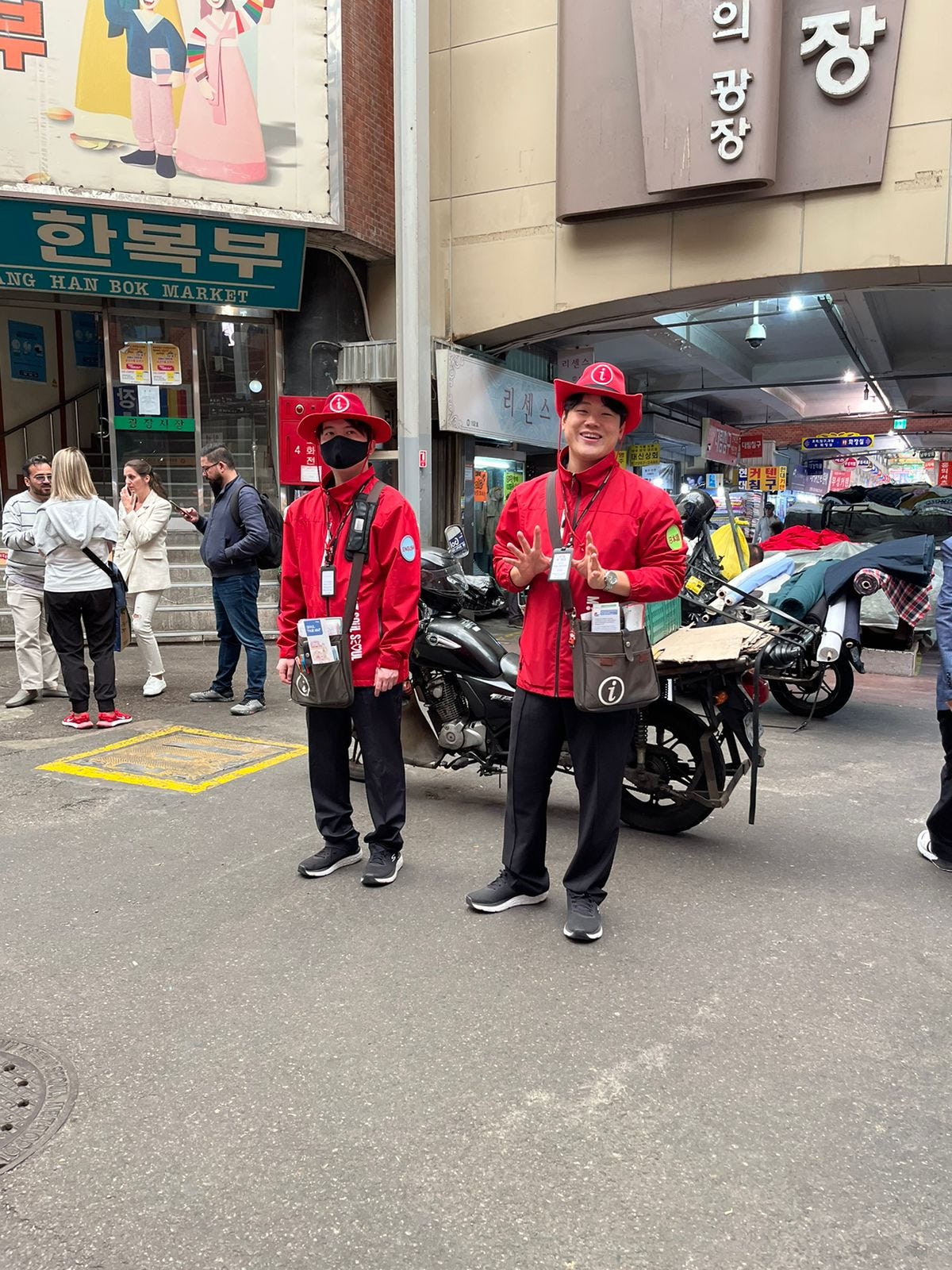Hi my dear readers,
All of you who know me, know my obsession with K-dramas, Korean food and Korean skincare. My dream of visiting Korea was finally fulfilled with my mom’s 40th b’day gift to me - a 12-day holiday together to Seoul and Jeju. So this is the newsletter to mark, save, share and star for when you or anyone you know plans to visit. Also, this one is long and detailed and you might have to open it in a new window!
Let’s begin.
I have never done as much research for any travel, as I have for Korea. I read the Lonely Planet Seoul from cover to cover, made copious notes, watched dozens of vlogs, read scores of blogs and scrolled through multiple reels. After all this, I still feel like the research wasn’t enough. So some disclaimers: please check the most recent information. Often we’ve found things changed after COVID, closed due to public holidays, closed temporarily for shows - or nothing like what the vlogs show them to be (vibes / places have changed). As with all travel, the more recent the information, the better.
Soul City: Seoul
Seoul is a LARGE city, divided into many neighbourhoods and in every area, there’s something worth seeing. But be warned, not everything you read about may be a must-visit. Here are the sights my mother and I enjoyed:
Gyeongbukgong Palace: Seoul has 4 grand palaces - and they all look pretty similar in terms of style and architecture. This one was the biggest and a must-visit for first-timers.
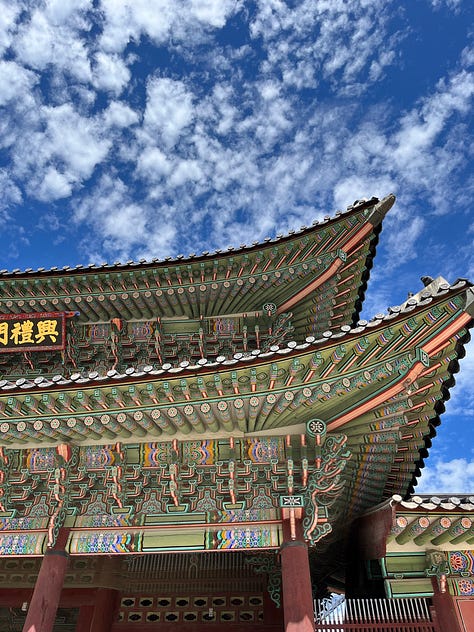
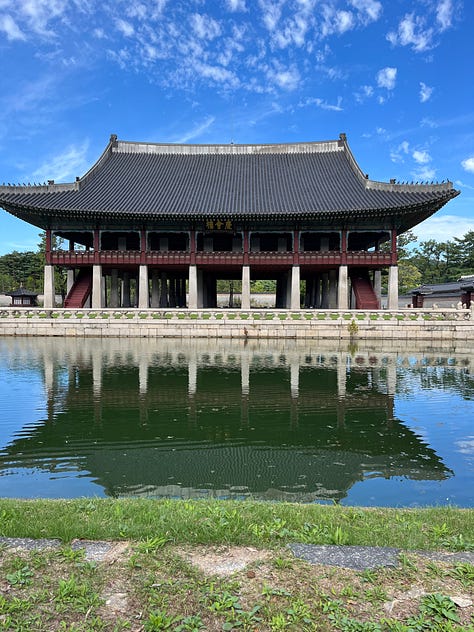
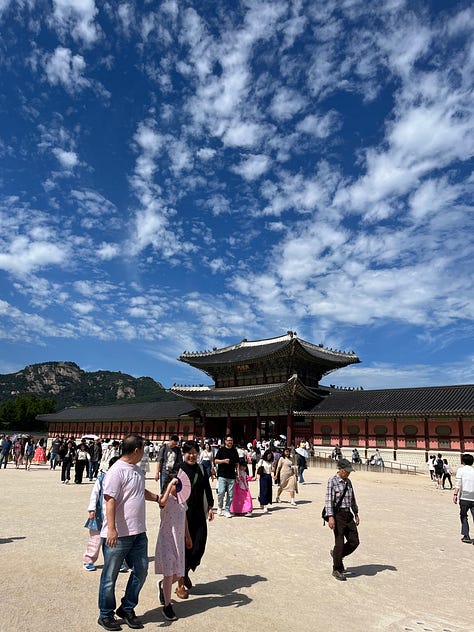
Insadong Culture Street: Full of souvenir and craft shops, art galleries, cafes and restaurants, this is a lively area - where you’re bound to catch a performance or two.
Myeongdong street food market: Though one of the most ‘touristy’ areas I’ve encountered, the vibrancy of this area and all the crazy street food on display are attractive. Here you’ll find octopus being grilled, steaks on fire, all sorts of waffles and custard-filled treats and lots of fried deliciousness on sticks. This is also a great place to shop for all beauty and skincare products. All the stores including Nature Republic, Hollika, Tony Moly, Etude House etc. have deals and sales.
Bukchon Hanok Village: If you’re prepared to climb a fairly steep set of streets, then this is a charming village filled with the old-style ‘hanoks’ or Korean homes. Good photo ops and nice views.
N-Seoul Tower: Again, very touristy - beware of the snaking, 2-hour long cable car queues and steep sets of stairs going up to the tower. Once you reach, it’s fairly gimmicky as well - but the views of Seoul make it worth a visit.
Starfield Library and the Gangnam-style hands: This floor to ceiling library in the same complex as the Coex Mall in Gangnam is quite beautiful. The Gangnam style hands statue in front of it, is a bonus photo op.
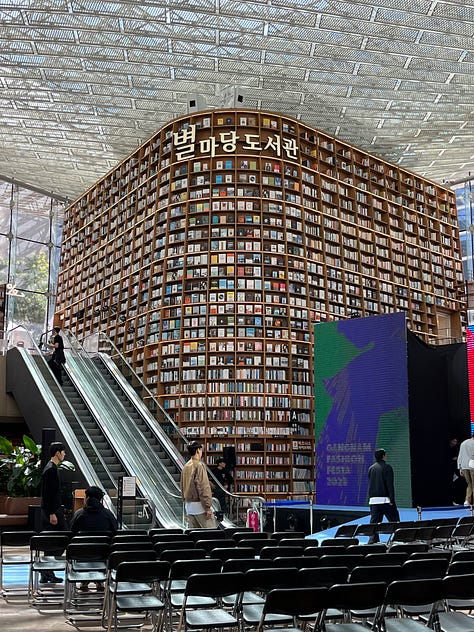

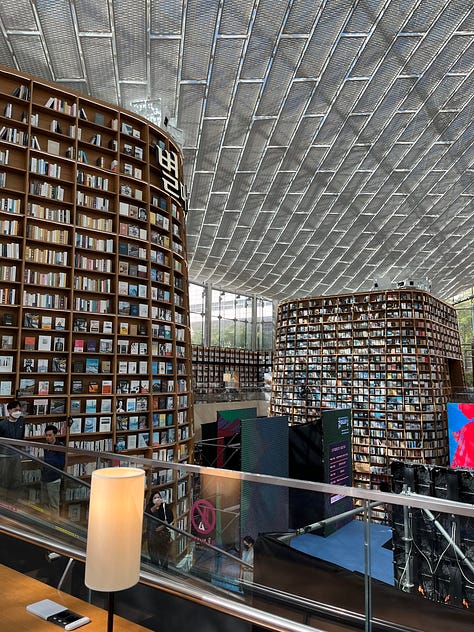
Gwanjang Market: Seoul’s oldest market, this is teeming with stores from souvenirs to bedding and is famous for its mung bean pancakes.
Dongdaemun Design Plaza: Something to do if you’re in Seoul for an extra day - this Zaha Hadid designed building sprawls like a spaceship and houses a museum, design lab, park, shops and a cafe.
Ikseondong: a series of parallel, tiny streets with hanoks converted to little shops and restaurants. Walking distance from Insadong.
Hongdae Shopping / Food street: Buzzing with students, this is one of the more fun streets to explore, with clubs and pubs down alleyways and ‘Noraebangs’ or karaoke rooms as well as game arcades everywhere.
Hello Jeju!
A small island in South Korea, I’ve wanted to visit this place ever since I watched my second k-drama and my favourite one - Something in the Rain. When Son Ye Jin cycles on a street with the ocean as a dramatic backdrop and finds peace in a small cafe in Jeju, I knew I had to come here. And it’s every bit as charming as I thought. Now packed with museums, parks and activities - it’s a lush green and deep blue break from the buzz of the city. Some must-sees:
Arte Museum: Not to be confused with the other museums of contemporary art etc, this is by far the best digital art museum I’ve seen. Hyper realistic visuals, amazing use of AI and superbly engaging displays.
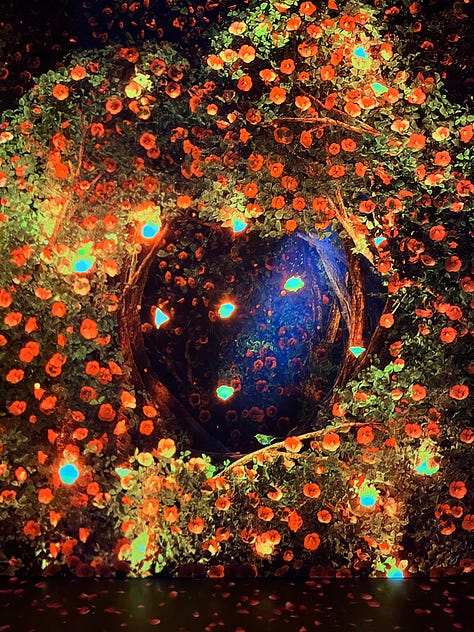
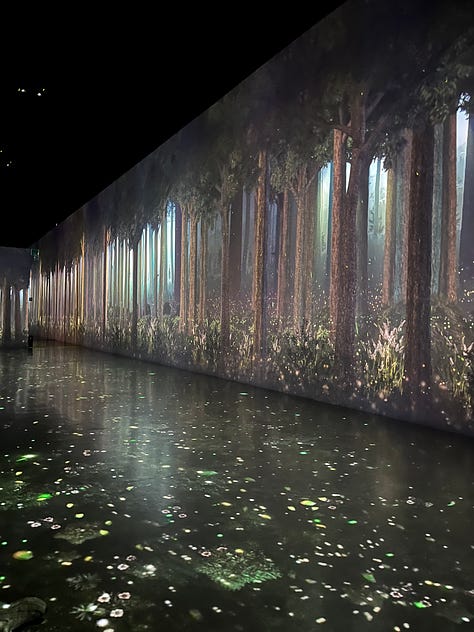
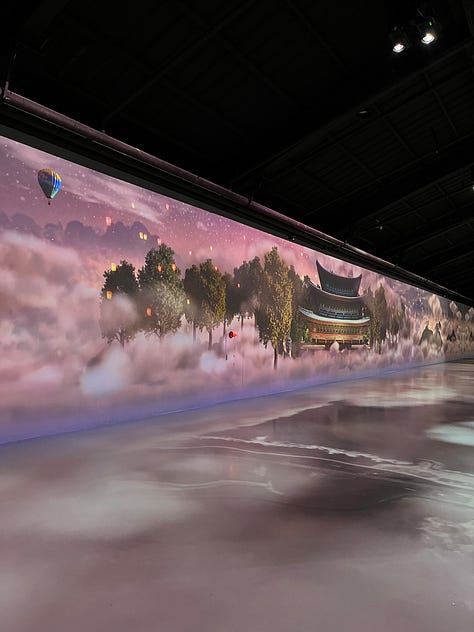
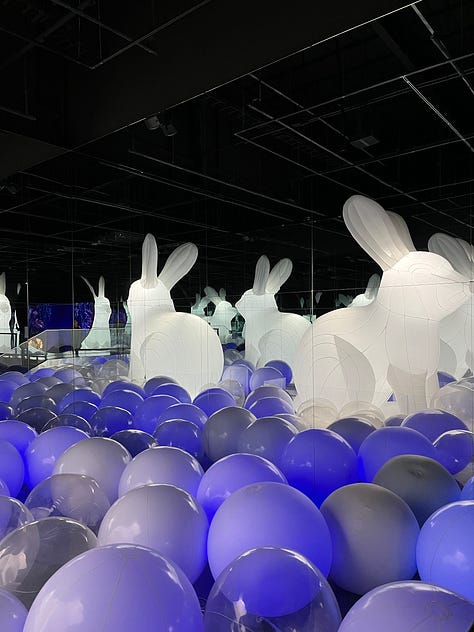
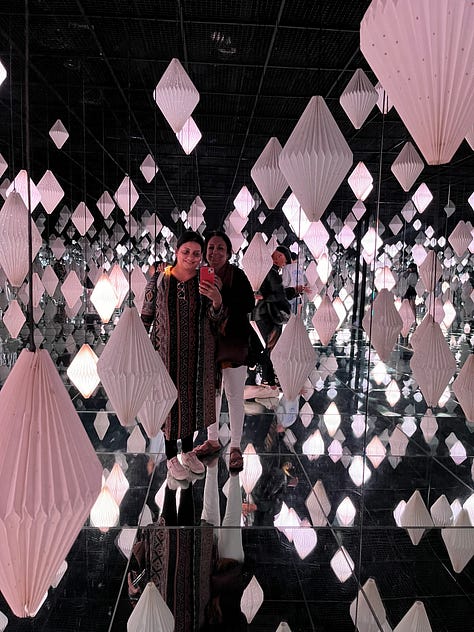
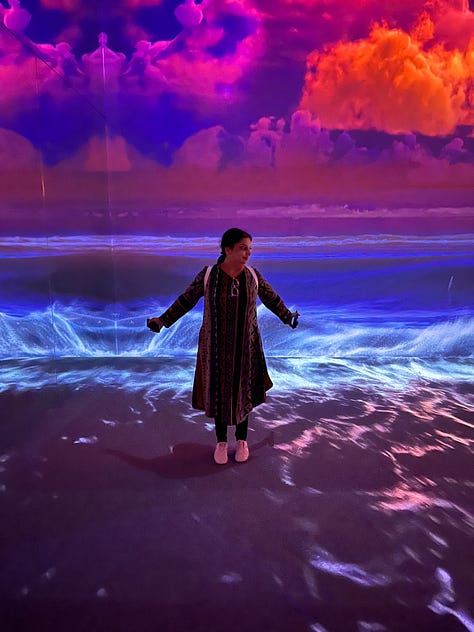
The Teddy Bear Museum: Funny, slightly gimmicky, but worth a visit just for the novelty of watching teddy bears in weird situations and learning about their history.
The Haenyo Museum: The women divers, unique to Jeju Island are UNESCO world heritage intangible living legends. At one time, they were responsible for the economy of their villages and made their society a matri-focal one. They can hold their breath for 3 minutes at a time without oxygen and harvest the ‘wet fields’ or the ocean for abalone, octopus and other sea creatures that fetch a good price. You can still see them perform some rituals, sing and dive at the Seongsan Ilchulbong crater - though when I went, they had cancelled the performance due to high tide.
The Pink Muhly fields at Hueree Park: If you’re going to Jeju in late Sept, early Oct, you can’t miss these fuzzy old-rose coloured plants that bloom in rows and bunches, called Pink Muhly.
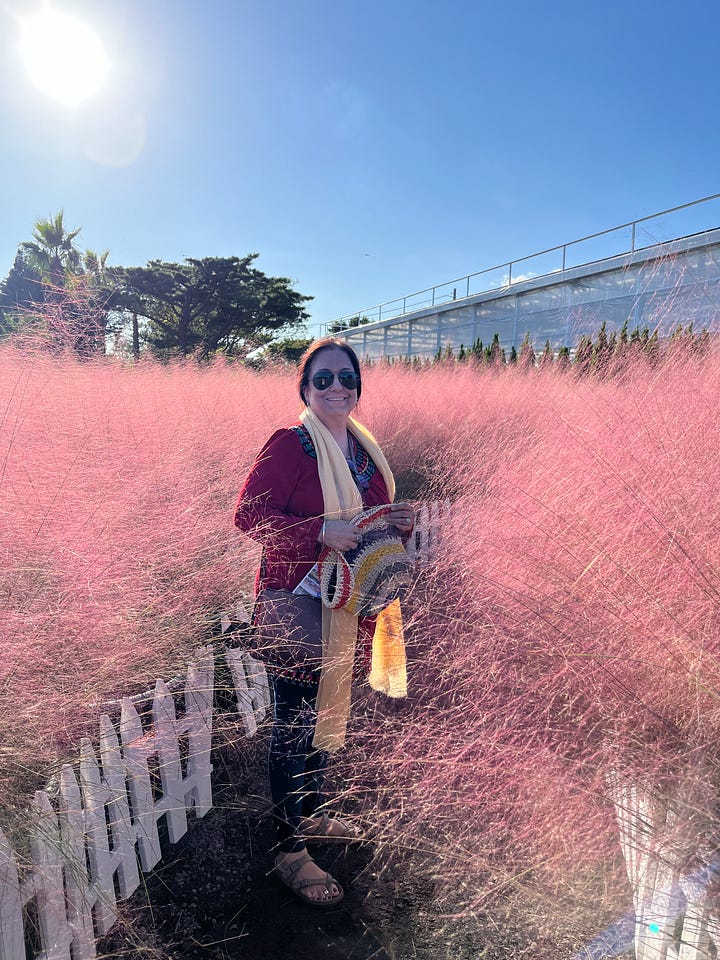
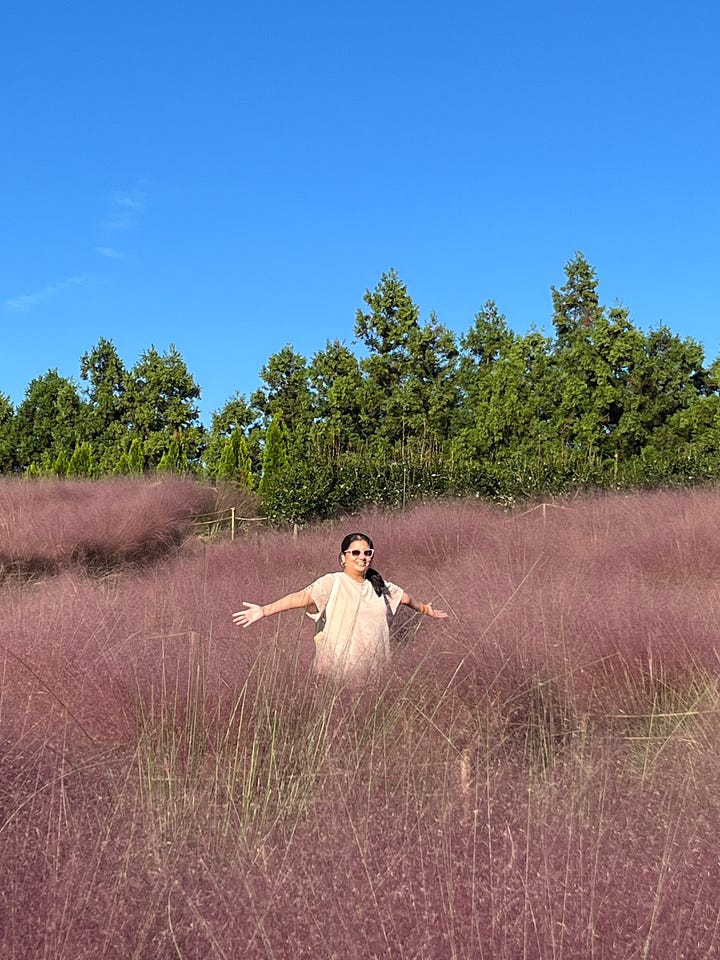
Innisfree House and the O’sullock Tea Museum: Lush green gardens, delicious matcha desserts and the chance to make your own soap. It’s all here.
Dongmun Market: If you’re living in one of the hotels near the airport in North Jeju, take a walk to this night market and watch as the vendors dance to K-pop.
Hyeopjae Beach: While Jeju has many beautiful beaches, this one is perfect to catch the sunset from.
Jeju is a large island to navigate and if you’re into hikes and treks, there are a TON of options. However, I would suggest hiring a taxi for the days you’re there, in order to make the most of the island.
Basics before you visit:
The currency here is KRW (Korean Won) and is available in 4 denominations (1, 5, 10 and 50,000)
Some basic Korean phrases are ‘Ann-e-yong-sayo’ (Hello), ‘Gam-sa-mida’ (Thank you) and ‘De’ (Yes). A nod while greeting anyone always works well.
Download the following apps: Papago (saviour), Naver maps, Kakao Taxi (like Uber). Papago is the most important as it helps to translate menus / signs as well as have conversations with locals who don’t know much English. Naver maps works much better than Kakao maps.
Check the weather - Seoul can get quite cold / windy.
Wear walking shoes only - there’s a lot of walking.
Expect self-service and pack accordingly - carry as little as possible because there’s a LOT to buy here. Also, Korea is not a country that’s big on service. There are no bell boys or porters to carry luggage. Taxi drivers also grumble if they have to load luggage. Hotel reception staff too are not especially helpful or friendly.
Carry a fork if you’re not used to using chopsticks. Restaurants provide long spoons for rice and broth but most don’t give forks.
Check for public holidays while booking - for instance, restaurants are shut during Chuseok (Korean Thanksgiving holiday in late Sept-early Oct) and taxis are not easily available either.
Carry wet wipes or portable bidets if you’re not used to toilet paper, as some public restrooms and hotel restrooms don’t have inbuilt bidets.
If you want to make the most of your holiday, check Air BnB Experiences for unique and memorable activities like cooking classes, pub crawls, food experiences with locals, renting Korean outfits and more. I booked a pub crawl in the Hongdae area and it was a lot of fun, dancing and chilling with other foreigners who wanted to experience Seoul’s night life. A football match between Korea and Japan was going on the same night, which added to the insane energy.
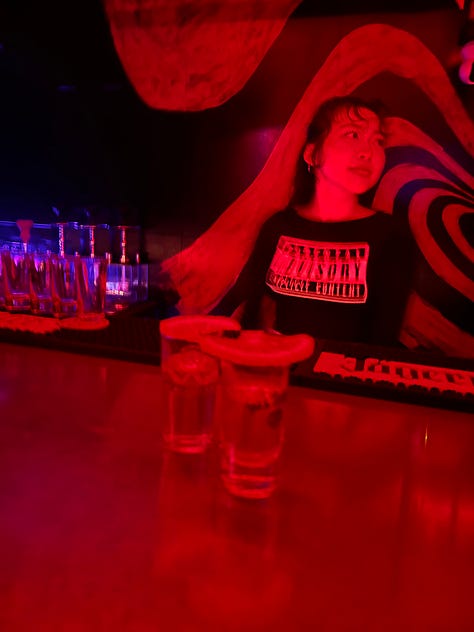
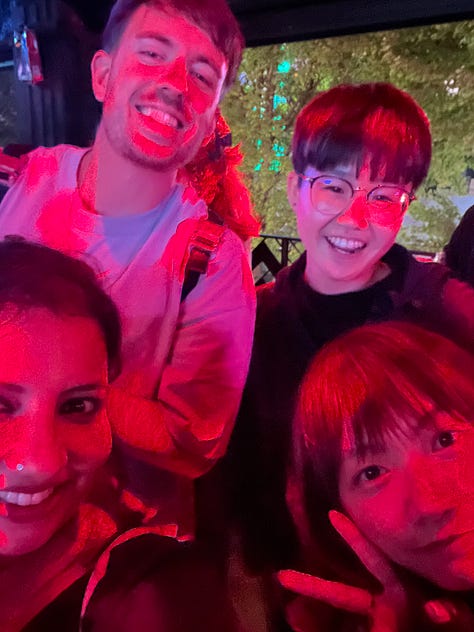
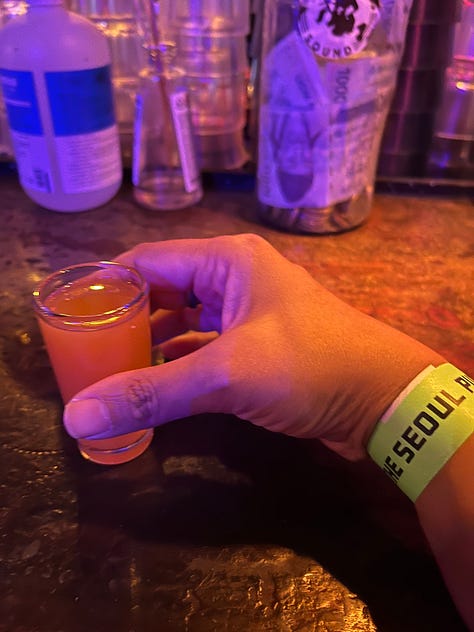
I also booked an experience where I wore the traditional hanbok. Much easier and smooth than I thought it would be - and the photos were just lovely.
There seems to be no roaming plan that offers unlimited internet, but there’s wifi everywhere.
To give you a perspective of how much money you need, Korea is more expensive than Thailand, but less expensive than Singapore.
Some essentials during your visit:
Share dishes and coffees (carry paper cups) portion sizes are large - even of coffees.
Buy the T money card from a 7/11 or any convenience store - they are not available at subways or bus stops.
If you have a senior citizen / child with you - check walking and climbing routes in advance for any monuments / sights. Many places have a lot of climbing to do with not very easy access to elevators (like the N Seoul tower).
Check for restaurant and cafe etiquette. Many places are self service - one has to fetch one’s own side dishes, water etc and always return the tray to the counter. Orders too are placed at the counter, often via a form.
When you ask hotels for taxis to and from or driver hires - don’t say ‘car’, say ‘taxi’ - when you say car they assume that you want to rent a car and drive.
When a taxi has red signage, it means it’s free. Green on the other hand, means occupied.
When flying in Korea, airlines screen your check in luggage and then ask you to wait for 10 mins while they screen your luggage for any banned items. This is normal and they’re not singling you out.
People in red jackets, also called ‘Red Angels’ are tourist guides who are found in areas like Hongdae and Myeongdong. Look out for them - they’re helpful with maps and tips.
Look out for different kinds of taxis - there are super premium ones that start at KRW 7000, which are the more expensive ones.
Those who like their coffee or tea sweetened, beware. There is no SUGAR to be found anywhere. Sugar sachets are hard to come by, most cafes offer pumps of sugar syrup! So carry your own packs of Stevia.
Korean Food: eat 24/7
It’s all as yum as it looks! A typical Korean meal will consist of a broth of meat, veggies and noodles - sometimes served with a small bowl of rice and lots of side dishes like kimchi and spinach. Some must-eats include:
Tteokbokki - rice cakes in a sweet/spicy sauce
Hotteok - pancakes, could be kimchi pancakes or honey ones
Bindatteok - mung bean pancakes
Fish cakes - soft fish kebab like pieces on a stick
Custard filled toasts / donuts / waffles
Japjae - glass noodles with veggies
Gimbap - the Korean version of sushi
Kalguksu - handmade noodles
Cold noodles, usually served in the warmer months
Mandu - Korean dumplings, usually stuffed with pork and quite large
Egg Drop Toast - a popular breakfast item - though an egg + toast breakfast is not really a thing in Korea - they eat noodles, broth etc for breakfast
Rameyon! There are a ton of flavours to choose from - so for all those hopeless ‘ramentics’, you’ll be in food heaven.
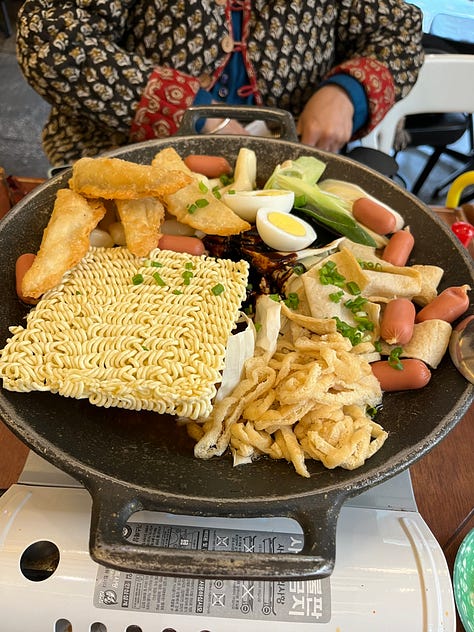
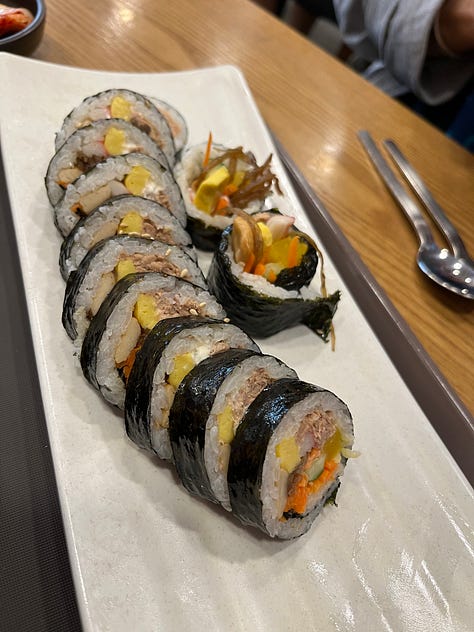
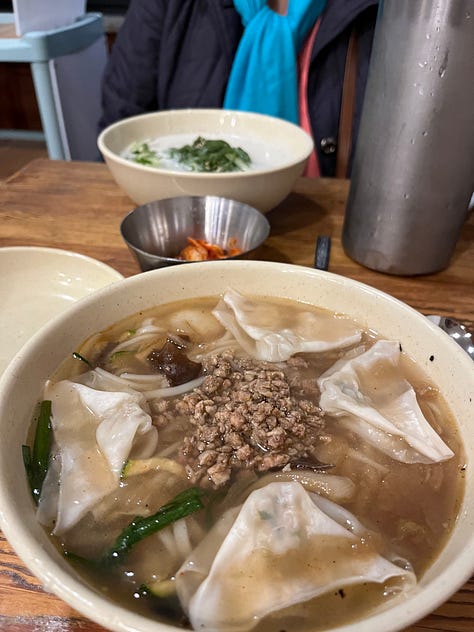


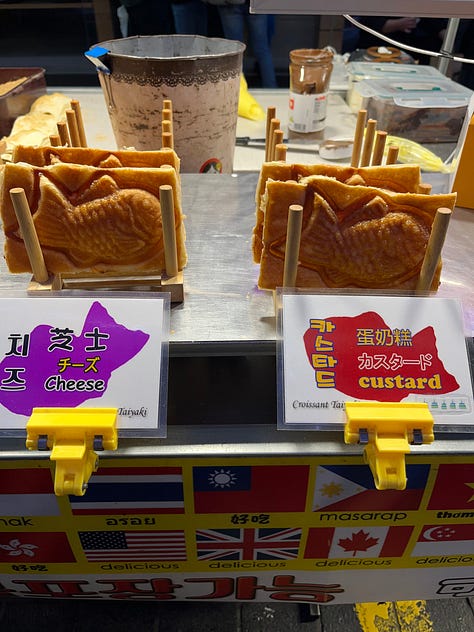
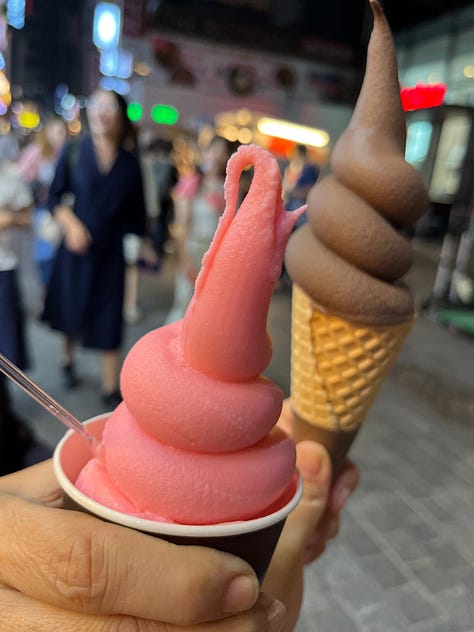

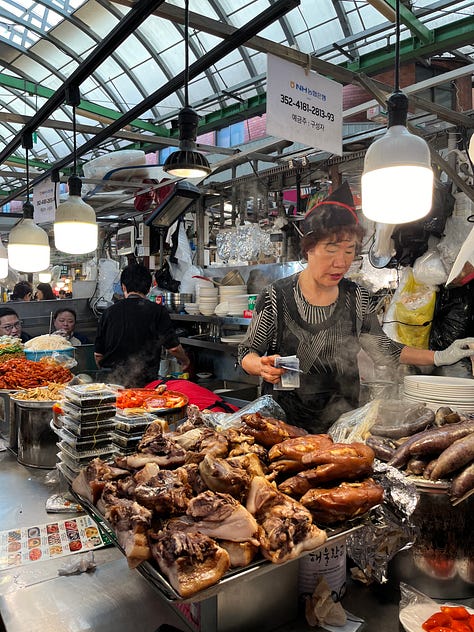
While all the restaurants we went to served fresh, tasty food - one that stood out was Myeongdong Kyoja in Myeongdong and on the Michelin guide for 7 years in a row, this one has a long line and rightly so - that kimchi and those dumplings are something else!
Most restaurants have stoves / hotpots in-built on the tables or heaters hanging above tables to grill food or keep it hot. Quite a lovely concept and I wonder why this hasn’t caught on in India.
When it comes to beverages and snacks, the variety is mind boggling. From Baskin Robbins flavours you’ve never seen before like chocolate mousse and strawberry cubes, to unique Oreos to mango and lime flavoured colas - Seoul has everything. Makegolli (rice wine), local beers and soju (Korean gin / vodka like drink) are popular alcoholic drinks here. While K-Marts and 7/11s will have endless shelves of rameyon and wafer options. I used my Papago app to translate everything!
Korean Skincare: glow like the Koreans do
While all Korean skincare doesn’t suit Indian skins, I’ve found that some really do. Once I started using the light yet hydrating serums and creams of Laneige and Belif, I’ve never looked back. However, these brands are harder to come by in Korea. Mostly one sees what’s popular or trending at that time with locals. Some brands I had researched and ended up buying were:
SK II Vitamin C Repair serum (two friends swore by this one)
Beauty of Joseon Relief Sunscreen
Beauty of Joseon serum kit
#OOTD Vitamin C serum (hit with the locals)
COSRS Advanced Snail Radiance Dual Essence + Eye cream
COSRS Skincare pads
Dozens of snail essence face masks
Etude House Glass Tint lipsticks + eyeliner
Brushes, face massager and other accessories from Olive Young
I also went for a facial at OHUI WHOO Spa in Myongdong, where the beautician used over 11 WHOO serums / creams / cleansers on my skin. Definitely glowed for a bit after. While it’s steep, I do recommend it - they put on leg massagers for you during the facial and it’s all quite enjoyable.
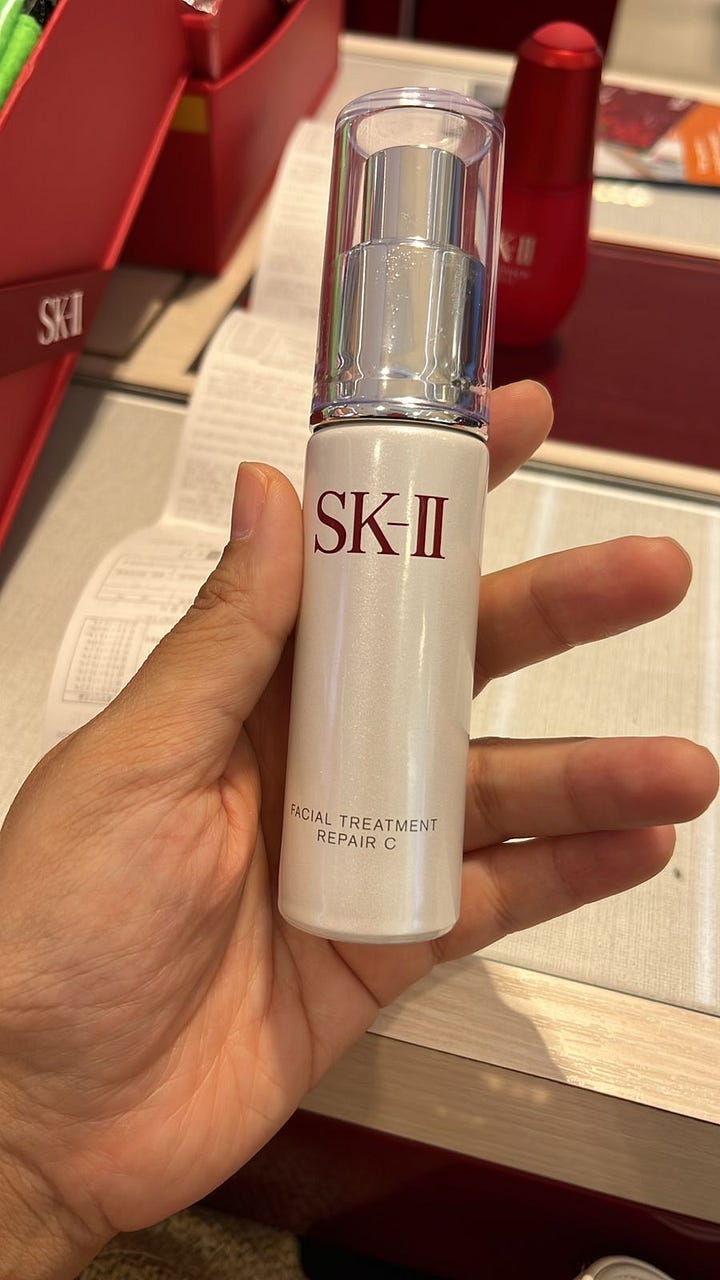
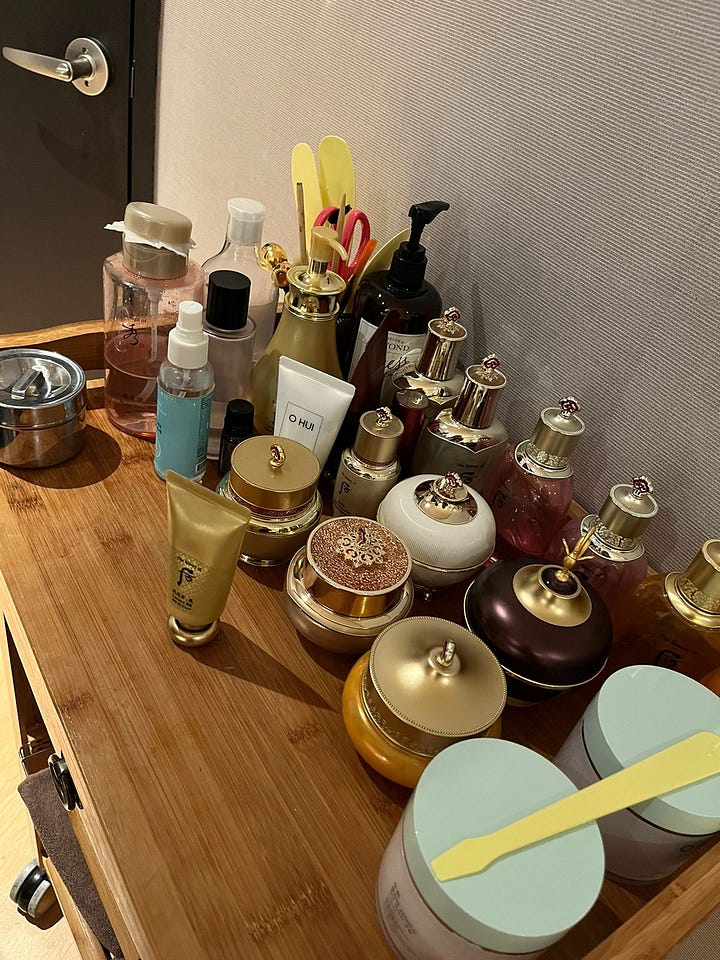
Final thoughts: Korea is every bit as vibrant and fun as I imagined it to be. After watching 35 K-dramas, the language feels so familiar, as does the food and so many of the locations. Koreans, while not friendly, are largely kind, sweet and will help you if they can. The majority of people we encountered did not speak English, so the language barrier is probably what has prevented Seoul from becoming a tourist hotspot like Hongkong. There are helpful signs everywhere - tourist police and Red Angels, showing that they do want to welcome tourists. There’s a lot of walking and travelling around to do as it’s a large city - and everything needs to be translated - from direction signs to packaged food - so come prepared and you’ll have a blast!
Last but not the least, look out for tall and handsome Oppas and stylish women wearing delicate, pretty outfits and shoes who all look like they’ve stepped out of a K-drama and live your own fantasy like I did.
Till next time <3
Shai
